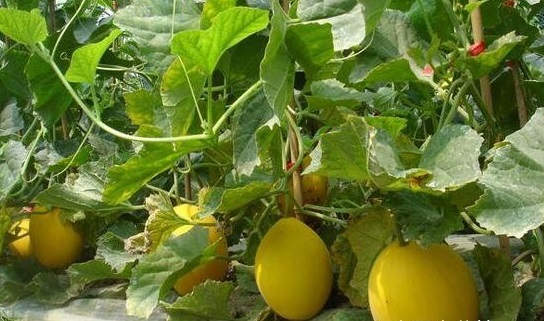Hami melon, with its rich nutrition, delicious taste, cool and heat-relieving effect, is favored by the general public. Since 2002, with the support of academician Wu Mingzhu of Xinjiang Hami Melon Research Center, Hami Melon has been successfully introduced, demonstrated and popularized in Jiading District, screened out new varieties of Hami Melon which are more suitable for the climate characteristics of southern region, and formed a set of mature cultivation techniques of Hami Melon in greenhouse.

How to grow Hami melon in the south?
1. Variety Selection
Hami melon varieties with strong disease resistance and suitable climate characteristics in southern China should be selected. The main varieties in this area are: Xuelihong, Xianguo, 98-18 (green and yellow skin), etc.
2. Field Selection
In cultivation of Hami melon, we should choose rice stubble fields which have not planted melons in 3 years and have a high terrain and good drainage. Sandy soil with rich organic matter and good permeability is the first choice for planting Hami melon.
3. Land preparation, border cultivation and fertilization
One month before planting, tillage should be carried out with a depth of 25-30 cm. At the same time, a complete set of ditches (Daming ditch, operation ditch and perished ditch) should be opened, and sufficient basic fertilizer should be applied in the whole tillage layer at one time. Commodity organic fertilizer is about 1000 kg per mu, potassium sulfate type ternary compound fertilizer (N:L:K=15:15) 30 kg and superphosphate 50 kg. When making a border, it must be high ridge and ridge. The border surface should be turtle-shaped with bow back of 25-30 cm. The border surface should be covered with plastic film (transparent plastic film in spring), which is beneficial to moisture conservation, moisture reduction and weed control.
4. Seedling Raising and Transplanting
(1). Seed treatment:
Drying treatment can be used to bake dry seeds in a constant temperature drying oven at 60-69 C for about 3 days. The disinfection and sterilization effect is good. Without this condition, seeds can be sunned in strong sunlight for 2 days.
(2). Sowing:
Spring sowing date is generally controlled in the first and middle of January. Spring nursery emphasizes heat preservation and disease prevention. The seedbed is covered with multi-film and the ground is covered with electric heating lines. The temperature of the seedbed should be two high and two low. Before emergence, the temperature of the seedbed should be controlled at 28-30. Before the first true leaf is unfolded, the seedlings are most easily elongated and the temperature should be lowered. The temperature of the seedbed should be kept between 23-25 in the daytime and 18-20 in the night. With the growth of seedlings and the rise of external temperature, the ventilation vent can be increased appropriately, and the ventilation time can be prolonged accordingly. One week before planting, the seedlings were tempered at low temperature to adapt to the external conditions gradually. Seedling disease prevention can use Amie cedar spray 1~2 times. The seedling age in spring is about 30 days, and three leaves are transplanted in one heart stage.
Contact: Mr. Ma
Phone: +86-0374-5699688
Tel: +86-0374-5699688
Email: [email protected]
Add: Fine Chemical Industry Park, Jianan District, Xuchang, Henan, China